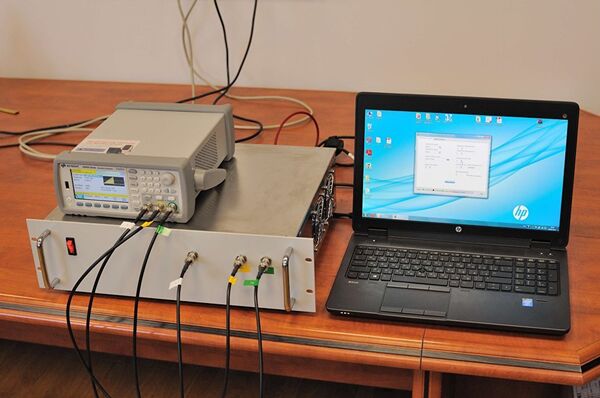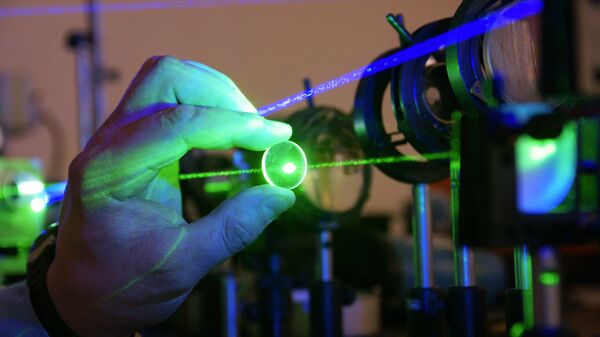The scientists' system consists of a computer program and electronic device with a modulator and control unit that allows them to control the strength of pulses entering the amplifier. By controlling the output stream, researchers are able to effectively moderate the laser's power. Furthermore, significant amounts of information can be transferred via lasers using precision pulses. The results of the physicists' work have been published in the Photonics Research journal.
The laser pulses initially generated tend to be weak, and require strengthening for most practical applications. This means running the laser through a photomultiplier tube, whereby it passes from one semitransparent mirror to another. This increases the number of photons (and hence, the laser's power) dramatically, but the power of individual pulses increases unequally, meaning that what is produced is a beam of pulses without a uniform strength.

Real-world Applications
Konstantin Yushkov, lead researcher at MSiS, explained that system he and his colleagues have come up solves this problem, leading to numerous important practical applications.
"With the help of our technology, we will be able to better control the energy of charged particles in particle accelerators, which will make it easier and more efficient to find new elementary particles and more quickly reach the 'dark matter'" that scientists are looking for, the scientist said.

There are other real-world applications as well, the physicist stressed. "For example, by monitoring the intensity of each pulse, we will be able to form a binary or octal code with our beam. This will make it possible to encode information, varying the time between two close-together pulses by cutting out unnecessary ones. As a result, we will receive an ordinary pulse laser with an incredible capacity to transmit information."
Yushkov noted for example that if before, lasers were not capable of transmitting anything more complicated than simple Morse code, precision control allows it to send the equivalent of video signals.

Research into this form of information transfer has been conducted by scientists around the world starting in the early 1990s. However, the technology of the time did not allow this possibility to be implemented on a mass scale. Now, thanks to efforts like those by the Russian physicists, this possibility is coming closer to becoming a practical reality.
The Russian system of control of laser pulses has undergone successful testing at Nizhny Novgorod's Institute of Applied Physics of the Russian Academy of Sciences.



